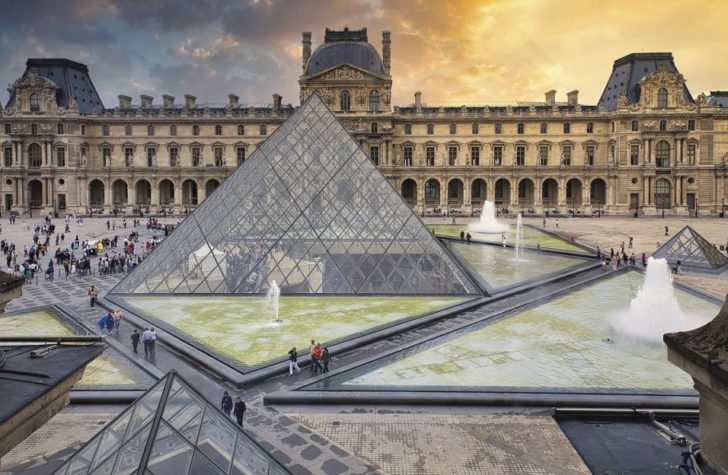Picasso Museum Malaga: Exploring the Masterpieces in the Birthplace of an Icon

Introduction:
Picasso Museum Malaga is a renowned art museum located in the vibrant city of Malaga, Spain. The museum is dedicated to showcasing the extensive collection of works by the legendary Spanish artist, Pablo Picasso. With its rich history, diverse exhibitions, and immersive displays, Picasso Museum Malaga offers visitors a unique opportunity to delve into the life and artistic journey of one of the most influential artists of the 20th century.
Section 1: Overview of Picasso Museum Malaga

Picasso Museum Malaga, initially named Museo Picasso Málaga, opened its doors to the public on October 27, 2003. Situated in the heart of Malaga’s historic center, the museum is housed in the Buenavista Palace, a stunning 16th-century Renaissance building. The museum itself is an architectural wonder, seamlessly combining contemporary design with the palace’s original features.
Section 2: Comprehensive Presentation of Picasso Museum Malaga
2.1 Exhibitions and Collections:
The Picasso Museum Malaga boasts an extensive range of artwork, comprising more than 200 works by Picasso himself. Visitors can explore the artist’s diverse range of styles, from his early studies to his later masterpieces. The museum’s collection showcases various forms of art, including paintings, sculptures, ceramics, and sketches. Each artwork offers a glimpse into Picasso’s innovative techniques, groundbreaking ideas, and his ever-evolving creative journey.
2.2 Popular Attractions:
Within the museum, several attractions enthrall visitors. One must-see highlight is the Palacio de Buenavista’s ground floor, where Picasso’s own paintings adorn the walls. Another popular area is the temporary exhibition gallery, showcasing a rotating selection of curated artworks by Picasso and his contemporaries. Additionally, the museum provides educational programs, workshops, and guided tours to provide a comprehensive experience for art enthusiasts of all ages.
Section 3: Quantitative Measurements about Picasso Museum Malaga
To understand the magnitude of Picasso Museum Malaga, let’s look at some quantitative measurements:
3.1 Visitor Numbers:
Since its inception, the museum has attracted millions of visitors from all around the world. In 2019 alone, Picasso Museum Malaga received over 600,000 visitors, highlighting its significant cultural value and global appeal.
3.2 Exhibition Space:
The museum spans across over 8,000 square meters, allowing ample space to showcase Picasso’s works and accommodate large crowds. The exhibition rooms are thoughtfully curated and designed to enhance the viewer’s experience, creating an immersive environment where art truly comes to life.
Section 4: Exploring the Differences Among Picasso Museum Malaga Sites
Picasso Museum Malaga has expanded its horizons beyond its flagship location. The museum now boasts several offshoots, including:
4.1 Museo Casa Natal:
Museo Casa Natal is a significant site for Picasso enthusiasts as it is the birthplace of the artist himself. This museum, situated in Plaza de la Merced, offers a glimpse into Picasso’s early life through carefully preserved family photographs, personal belongings, and recreations of his childhood home.
4.2 Museo Picasso Mijas:
Located in the picturesque village of Mijas, Museo Picasso Mijas showcases a collection of Picasso’s ceramics. The museum is known for its intimate atmosphere, offering visitors an opportunity to appreciate the artist’s lesser-known medium in a serene setting.
Section 5: Historical Overview of the Advantages and Disadvantages of Picasso Museum Malaga Sites
5.1 Advantages:
The main advantage of the Picasso Museum Malaga is undoubtedly its rich collection of Picasso’s works. Visitors have the privilege of exploring the artist’s journey firsthand, from his humble beginnings to his moments of artistic transcendence. Additionally, the museum’s strategic location in Malaga, Picasso’s birthplace, adds a layer of authenticity and cultural significance to the visitor’s experience.
5.2 Disadvantages:
The main drawback of the Picasso Museum Malaga sites is the overwhelming popularity of the museum, resulting in large crowds and potentially long waiting times. Visitors should consider booking tickets in advance or arriving early to avoid disappointment. Additionally, due to the extensive collection, some works may be temporarily unavailable for public viewing, as they may be on loan to other institutions or undergoing restoration.
Conclusion:
Picasso Museum Malaga offers an extraordinary journey through the life and artistic genius of Pablo Picasso. With its rich collection, diverse exhibitions, and carefully curated spaces, the museum provides a profound and immersive experience for all who appreciate art and seek a connection to one of the greatest artists in history. Whether exploring the flagship museum in the Buenavista Palace or venturing to other Picasso Museum Malaga sites, visitors are sure to be inspired and captivated by the enduring legacy of this artistic icon.

















